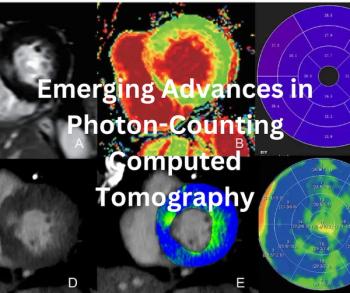
Start-ups hope for success in niches before expanding into general markets
U-Systems, ADI choose breast imagingWhen it comes to introducing new products, going slow may be better than going fast. U-Systems of San Jose, CA, has found that to be the case with its newly introduced Vista ultrasound platform.
U-Systems, ADI choose breast imaging
When it comes to introducing new products, going slow may be better than going fast. U-Systems of San Jose, CA, has found that to be the case with its newly introduced Vista ultrasound platform. Although the company's strategic focus is ultrasound, the immediate emphasis for this product is the breast. U-Systems hopes to hone the technology before expanding to other applications.
"Diagnostic ultrasound is becoming almost a commodity. And the field is packed with major players like GE, Siemens, and Philips," said Mark L. Stribling, vice president of marketing for the company. "It's very difficult for a young company to go head-to-head with them. The idea is to find a niche. We have tried to build a system that we can sell to the 10,000 or so sites in the U.S. that are accredited through the Mammography Quality Standards Act."
In short, breast ultrasound was not as well covered as other areas of clinical interest. To make the gambit a little more appealing, U-Systems established ties with R2 Technology, a key player in the development of computer-assisted detection technology. (USI founder Bob Wang is also the founder of R2 and a member of the R2 Technology Board.) Together the two companies have agreed to study the use of CAD combined with ultrasound in finding breast cancer.
The FDA cleared Vista for routine diagnostic work in June 2001. The midrange system sells for $89,000. Five units have already been soldabout 10% of the sales volume the firm hopes to achieve during the year ahead. The company's sales force has only recently come on board, according to Stribling. In the meantime, U-Systems is soliciting input from ultrasound experts, while keeping a close eye on the future.
"As a small company, we have to focus our efforts on one niche, then we can leverage that and go after other proceduresassuming we're successful. If you look at metastatic diseasesliver, kidney, the GI tract, prostate cancerthey all present the same way and therefore we can find them. They'd be potential markets for us."
Also moving cautiously is Advanced Diagnostic of Preston, WA. After five years of R&D, the company has begun marketing its first commercial product, the Avera Diffractive Energy Imaging (DEI) system. This technology generates images that look like a radiograph yet are created using ultrasound (SCAN 11/21/2001).
Like U-Systems, the company is taking a slightly unconventional tack. Though it received FDA clearance a year ago, the product was shown for the first time at the 2001 RSNA meeting. There was no big splash following FDA approval, and deliveries will not begin until 2002. Slowly but surely the product is moving along.
Like Vista, Avera's strength is found in breast imaging. Avera is designed to identify tissue boundaries much like mammography does. Although the product's initial application involves breast imaging, other applications are expected to follow.
"Our strategy in the U.S. is to go direct, and we're really focusing on leading sitessites that are considered leaders and influence the market," said Denis O'Connor, chairman and CEO. "Our hope is to install 20 to 25 systems at leading centers. From that we'll branch out into a bigger distribution."
Until then, things are moving right along. ADI has been involved in clinical trials at the Virginia Mason Medical Center in Seattle. Trials have been completed with earlier prototypes at the Richland Regional Cancer Center and the University of Washington Medical Center's Roosevelt Clinic. In September, the company began a clinical study at Johns Hopkins University in Baltimore, a top recipient of government grants for healthcare research.
Newsletter
Stay at the forefront of radiology with the Diagnostic Imaging newsletter, delivering the latest news, clinical insights, and imaging advancements for today’s radiologists.

































